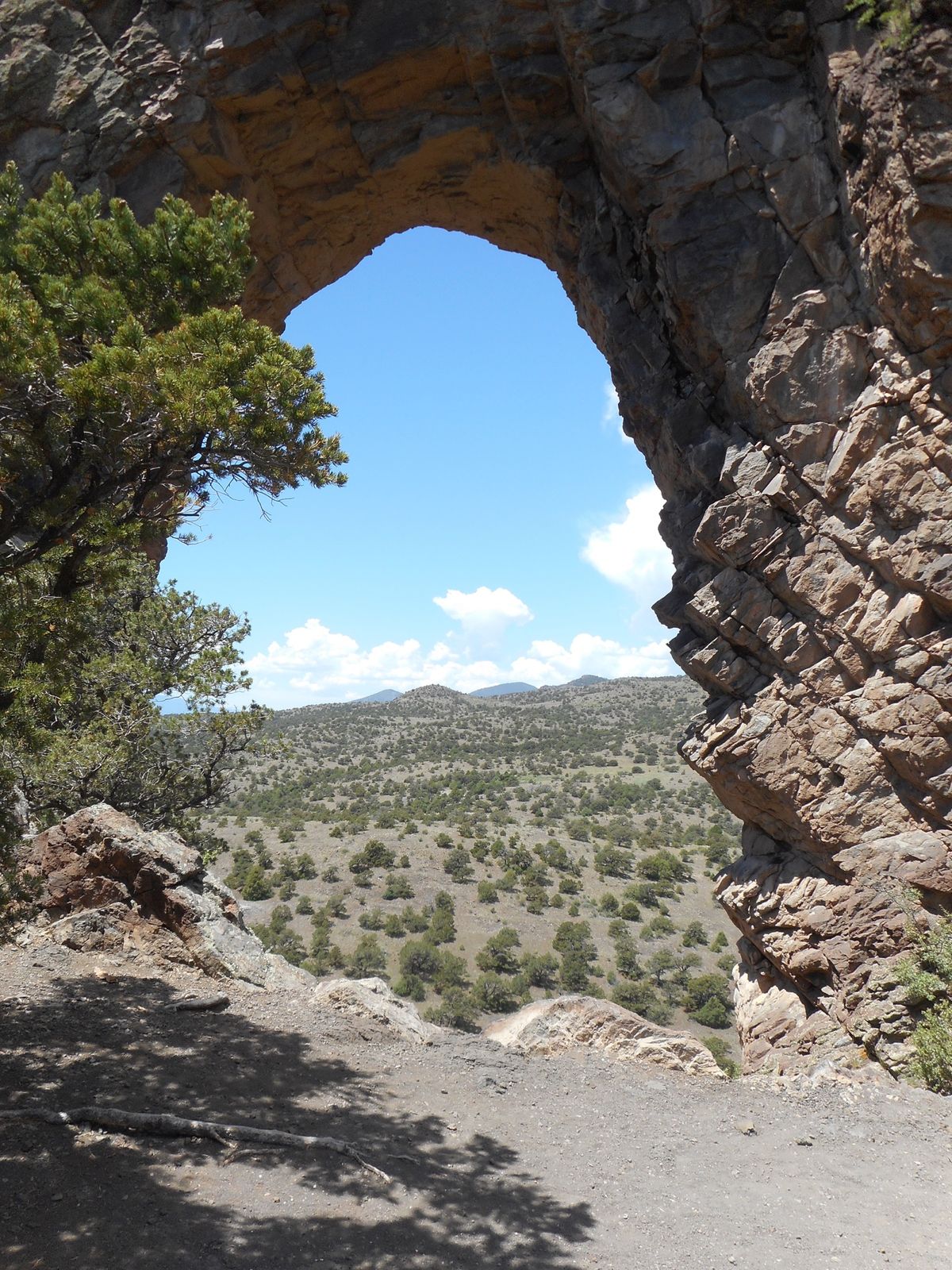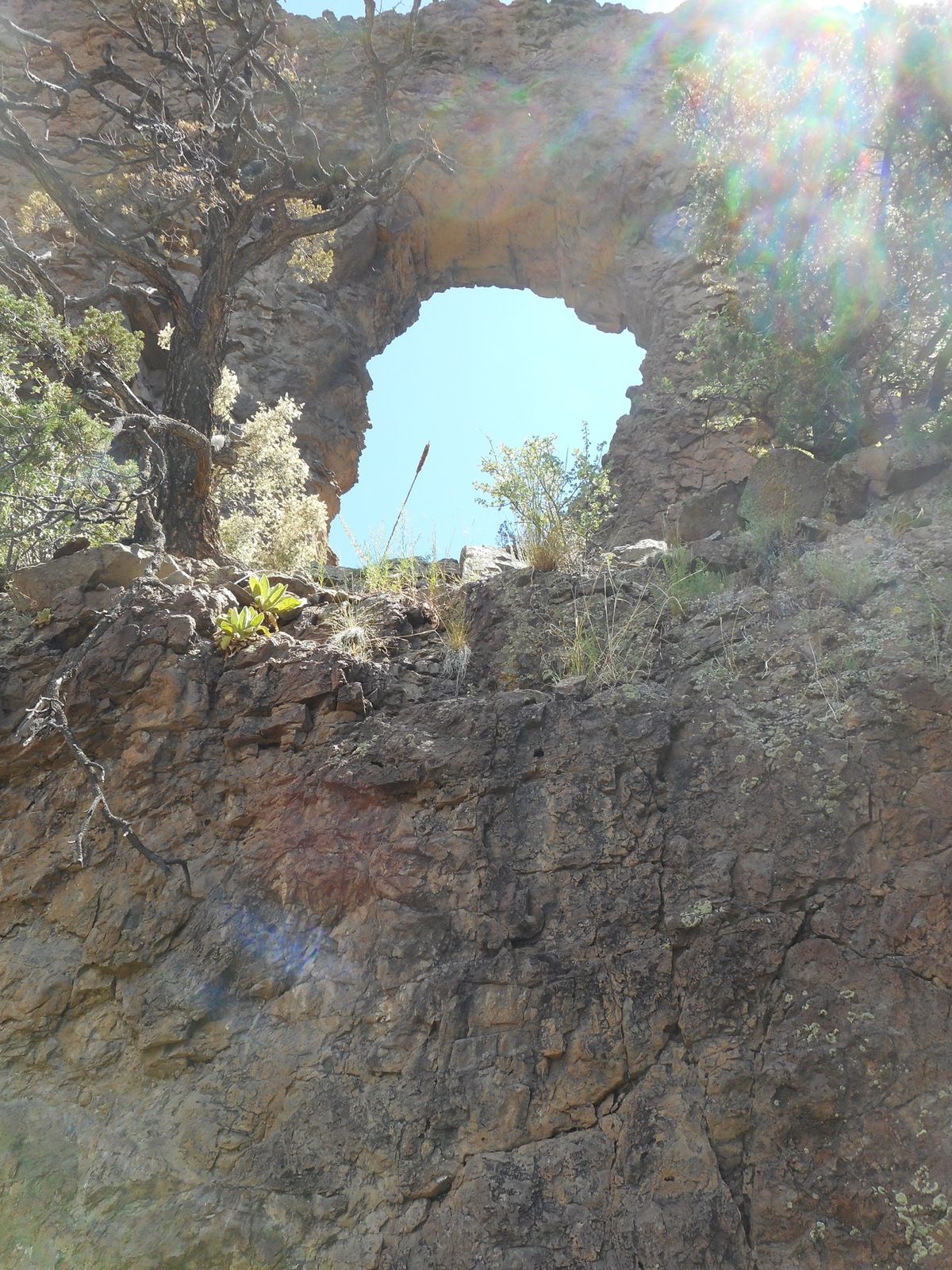About
This arch is different from many of the others you'll find scattered around the southwestern United States. Rather than being formed from uplifted sandstone as most arches are, the Ventana Arch formed within a magma intrusion called a volcanic dike.
Lava from the Summer Coon volcanic complex intruded into cracks in the surrounding alluvial and volcanic deposits about 30 million years ago. Parts of the magma cooled at different rates and separated from the rest of the wall, and when the surrounding deposits eroded away, the inner part of the arch collapsed, leaving a hole in the dike. The end result was a 40-foot-tall, 30-foot-wide arch.
A steep hike—more of a scramble, really—leads to the arch. The scramble is rewarded with views across the San Luis Valley to the Sangre de Cristo mountains and the Great Sand Dunes National Park. The arch itself, however, is difficult to see from any direction except directly in front of or behind it.
The arch is an important sacred site for the Jicarilla Apache and Ute tribes and is still used for ceremonies.
Related Tags
Know Before You Go
The arch is about 11 miles northwest of Del Norte, Colorado, on Forest Service Road A23. The road is rough and a high clearance vehicle is advised but not required. Signs in the area point to the arch. When hiking to the arch, wear sturdy shoes with good grip. Caution is warranted when climbing to the arch and when descending. Loose rock requires caution and stable footing.
Published
July 22, 2019




























